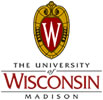Change in Back Up Email Retention Period
Effective January 1, 2010 SSCC will keep backup copies of email for one month rather than one year like we do all other files backed up on SSCC's network. This change was approved by SSCC's steering committee. By doing so, we will be less vulnerable to audit, litigation, and open records requests.
On a related note, those of you who deal with record management (and email can be considered a record) may find it useful to view the PowerPoint slide show, A Winning Strategy for Email Management, written by UW-Madison's recently retired Records Officer, Nancy Kunde, of the UW Records Management section of the UW Archives.
Running Large SAS Jobs
SAS programs involving very large data sets can, if not written properly, slow down the server they're running on or network disk access for the entire SSCC. We've thus prepared some guidelines in a Knowledge Base article entitled Running Large SAS Jobs on the SSCC Linux Servers.
If you are involved in a project that uses very large data sets (gigabytes and up), we'd love to hear from you: our server configuration and even purchasing decisions are often driven by making sure such large, ambitious projects can be run successfully. The statistical computing specialists at the SSCC Help Desk will also be happy to help you make your program as efficient as possible and not cause problems for others.
New /ramdisk Linux Directory for Disk-intensive Programs like SAS
We have created a new /ramdisk directory on the SSCC's Linux servers. This directory acts like regular disk space but files placed in it are actually stored in RAM, making it extremely fast. Two caveats:
- The maximum total size of /ramdisk is 1GB
- Any files in /ramdisk that are not in use will be deleted after one hour
While any program that uses intensive disk I/O might benefit from using /ramdisk, we anticipate that this will mostly be useful to SAS programmers since SAS is so dependent on disk I/O. For more information about using /ramdisk in your SAS programs, see our new Knowledge Base article Running Large SAS Jobs on the SSCC Linux Servers.
Time to Reserve Computer Classroom for Spring Semester Courses
It's time to reserve the 3218 classroom or mobile lab for your spring semester class. Use our new web form to make your request(s). Reservations are filled on a first-come-first-served basis. Contact Caitlin Tefft (ctefft@ssc.wisc.edu) if you have questions. Caitlin's office is in the 4226 office suite and her phone number is 2-0862. Visit our Instructional Support at the SSCC web page for more information about the 3218 classroom and the mobile lab.
Even if you do not need to reserve the classroom or lab, you can arrange for your students to have access to SSCC's drop in labs (3218 and 4218 Social Science) and Winstat (available from anywhere with an Internet connection) for doing their homework. Caitlin can help you with this as well.
Doug Hemken (dehemken@wisc.edu), statistical computing specialist for SSCC, is available to help students with homework and class projects. You can also arrange for Doug to come to your class and provide instruction on statistical software. Doug's office is in the 4226 office suite and his phone number is 2-4327.
We recently purchased a document camera to use in class rooms where the screen covers the blackboard. We also have special software in the classroom that allows you to control or interact with your students' computers. Contact Caitlin if you'd like to learn more about either of these.
Tip: Restart NVivo Periodically So It Saves Your Project to the Network
When you open a project in NVivo on Winstat, Nvivo makes a local copy of it to work with for the duration of your NVivo session. When you click Save, it only saves the changes you've made to the local copy. NVivo only saves your work to the network when you quit the program.
If NVivo crashes (which is not uncommon) the changes you made to the local copy will not be saved to the network. SSCC staff may be able to help you locate and recover the local copy, especially if you do not log off (contact the Help Desk for assistance). However, the best protection is to periodically quit NVivo and then start it again. This forces NVivo to save your work to the network so it won't be lost even if the program crashes.

